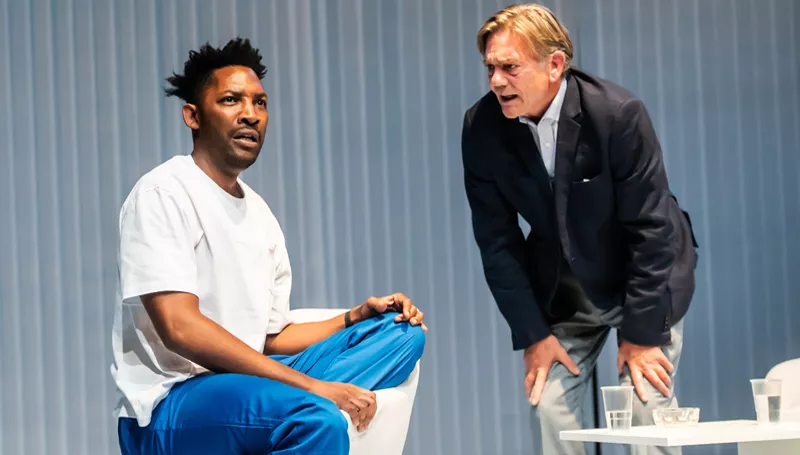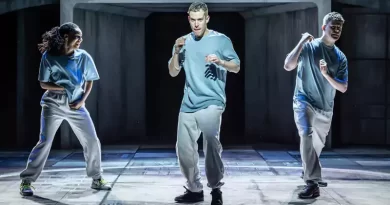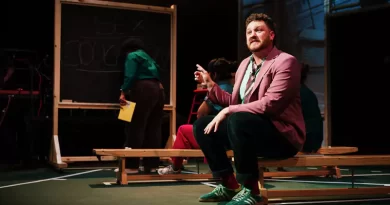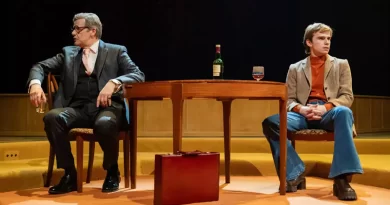“Blue/Orange” at Greenwich Theatre
Jeremy Malies in South-East London
14 October 2025
★★★★
Did Joe Penhall start the trend for plays about medical ethics with this 2000 piece set in a West London mental hospital? There is certainly a roll call of such works now including A Number by Caryl Churchill, The Effect by Lucy Pebble, The Doctor by Robert Icke, and Family Tree by Mojisola Adebayo. But the form is not new; my favourite is Home by David Storey (1970). And it should be remembered that George Bernard Shaw’s The Doctor’s Dilemma premiered in 1906.
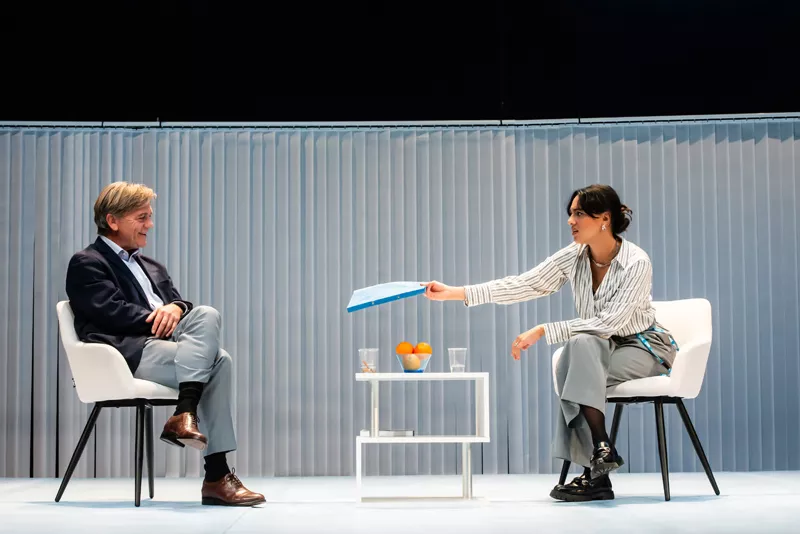
John Michie and Rhianne Barreto.
Photo credit: Lidia Crisafulli.
Here, senior psychiatrist and registrar Robert (John Michie) scraps with junior colleague Rubina (Rhianne Barreto). The pawn in their fight is Afro-Caribbean patient Christopher played by Matthew Morrison. Penhall’s most recent play The Constituent also dealt with mental illness, but Blue/Orange remains his most revived work.
It’s an elegant production in a clinical (clue is in the setting) design by Jana Lakatos. We are presented with little more than white chairs, a water cooler, and a dish of oranges that Christopher says are blue. He should know, as he sells fruit in Shepherd’s Bush Market. And his view of the colour spectrum may be as valid as ours just as it may well be true that he is the son of Idi Amin by a mother in Feltham. We are told that one of the dictator’s other estranged wives is running a chippie in Haringey. (I howled at the many good gags.)
Christopher is in his early 20s and later he tells the doctors that his father is in fact Muhammad Ali. This and a wealth of sociological detail anchor the action where Penhall originally placed it but there has (with the author’s involvement) been one major change.
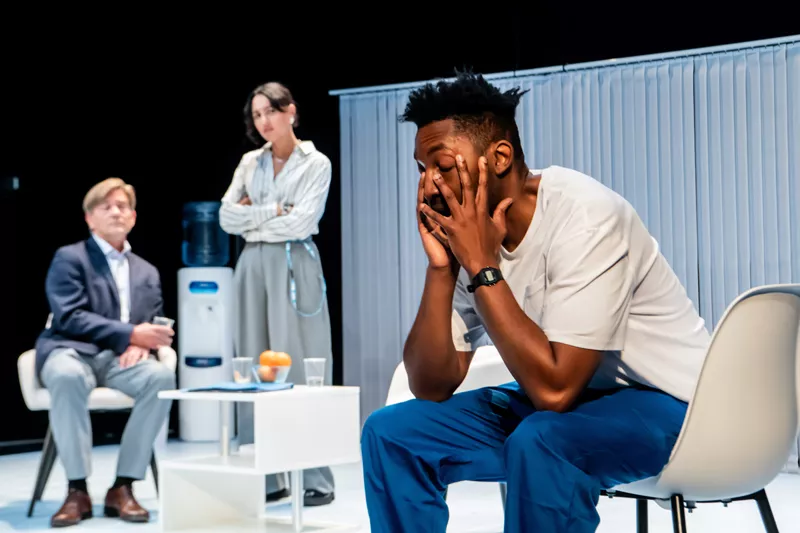
John Michie, Rhianne Barreto, Matthew Morrison.
Photo credit: Lidia Crisafulli.
In the original, the junior doctor is a white state-educated, non-rugby-playing male who bristles when confronted by the public school rugger-bugger ethos in parts of the medical profession. Now, the junior is a South Asian woman. Penhall’s discussion of race and cultural heritage was already subtle and perceptive (this more or less goes without saying) but the change creates greater resonance. When Robert prepares for Christopher’s departure by saying, “He’s going back to his people. He’s on the White City estate …” there were gasps on press night. Now, when Rubina replies, “He comes from Shepherd’s Bush! What are you trying to say?” there is even more freight to the discussion of heritage.
Benefiting from naturalistic acting across the board, director James Haddrell balances the dynamic precisely until the senior medic inevitably wins out. The jokes (usually given to Robert) continue to fly. He reveals that, contrary to Rubina’s preconceptions, he did not study at Cambridge but at the Maudsley, a psychiatric teaching hospital in London. “I think you need to go there. And I don’t mean for training!” Earlier he has asked, “What is it in African?”
Henry Slater’s lighting design features four strip LEDs which flicker periodically, either as a code that went over my head or to indicate that the shortage of beds at the facility is matched by scant maintenance of basics. This is at variance with the atmosphere of cleanliness and lack of clutter all brought out by a sparse jazz trumpet that, predictably but deliciously, hits a few blue notes.
Michie rises to challenges in speeches that require him to ponder the difference between a simile and an analogy, discuss the aesthetics of contemporary French rugby (the team plays in blue of course), while quoting everybody from R.D. Laing to Allen Ginsberg. Just at the close during her character’s meltdown, Barreto’s gestures become a little broad. Be it convulsing, blowing smoke rings, or tearing an orange apart, Morrison is inventive and compelling throughout.
The change in one character’s gender works, and the many late-20th-century details from skinheads at Queen’s Park Rangers games to chaos at the Hanger Lane gyratory form a good backdrop. This play has much period detail, but the broad sociological debates mean it will never be a period piece. But here’s a suggestion for something brave in a subsequent iteration. Make both psychiatrists women and with the boom in women’s rugby even the sports content would work.
I left the theatre wondering if clinicians see what they want to see, and my perception of the colour orange was skewed for a few days. The Laing quote continued to echo: “Sanity is a conditioned response to external stimulation.” Opposed to the pharmaceutical approach (you just know that Robert is going to poleaxe Christopher with Valium), Laing would have listened to Christopher about colours and seen his personal experiences as valid. The play is notable in taking on the subject of schizophrenia and recognizing it as one of the last great taboos. Haddrell and his colleagues create a dynamic night at the theatre without once trivializing this core subject matter.

